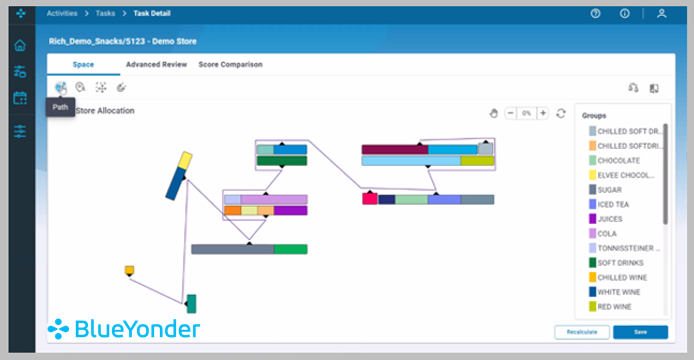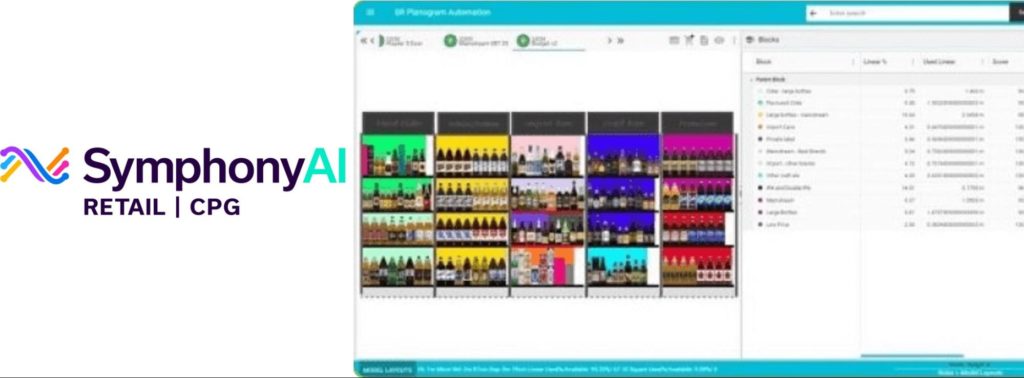
Blogs
Innovating Category Management – Unlocking Innovation in Established Space Management Solutions
August 30, 2023
After meeting the innovators revolutionizing the way we manage space, it’s time to recognize the leaders, understand current progress in the industry, and chart a path forward.
Merchandising begins with placement on the shelf and ends in a shopper’s basket. For retail, at least, the “shelf” is the medium where you reach and message shoppers. It is about optimizing available space and creating eye-catching displays to draw customers, highlight popular and profitable products, and provide an exceptional experience.
Looking back
From the early days of merchandising on a chalkboard to introducing the first computerized schematic or planogram and its evolution, we have seen two decades of innovations in the area — innovation brought about by the top three solutions in the market or their previous incarnations. We have a lot to appreciate and thank for the perseverance and resilience they showed in building a whole industry, in most cases, out of nothing.
The companies have evolved. Technologies have advanced. However, the basic principles of space management remain the same. Retailers must still balance the need to showcase their merchandise with the need to create a comfortable and enjoyable shopping environment. Effective space management is a key factor in the success of any retail store, and it will continue to be an important part of the retail landscape for years to come.
For many reasons, the leading solutions innovation engines have stagnated over the past decade. It’s been years in the making. Let’s talk about why.
The leaders

Currently, Blue Yonder is the leader in this space, with its Intactix acquisition as the foundation that helped build its capabilities. Although showing its age, it still has the most complete space management solution and a majority market share. It has the industry’s most capable team, which sets the pace for building many of the innovations in a space management portfolio.

Tied for second place are the early innovators Symphony Retail AI with Apollo and NielsenIQ with Spaceman. Companies they acquired created the very first set of planogramming tools.
SymphonyAI recently worked on an overhaul, building an integrated solution for the cloud and venturing to acquire expanded floor planning and a computer vision solution for the shelf. NielsenIQ keeps a steady, conservative approach, with several targeted acquisitions to expand its capabilities.

RELEX Solutions, a newcomer with a sizeable investment and fresh motivating culture, is emerging on the scene. The company is leveraging its Galleria acquisition, providing an alternative space management solution and tools, and competing for business against the traditional leaders in the market.
It shows much promise as a complete solution for space and category management and supply chain management with the potential to grow its market share.
Affordable solutions

There are other affordable options focused on planograms and a few floor plan solutions offered by the likes of Retail Shelf Planner, ShelfLogic, GoPlanogram, Spanner, and EZPOG. They provide a satisfactory range of features and have captured a decent market share by customer count globally, which is very impressive.
The root cause
I have often heard this phrase about software product positioning: “You have market share. What else could you possibly do or need?” While this viewpoint may make sense in the short term, it is not a successful long-term strategy when it comes to product development. To stay ahead, you must look for ways to disrupt your product. If you don’t, someone else will do it for you.
Integrating various acquired systems or tweaking solutions to the cloud is not innovation. Investing in core capabilities is part of ongoing business. When reviewing a vendor’s product investment, buyers must identify the percentage targeted for net new creation and a new way of thinking. This should be the key criterion for any vendor selection.
Leadership matters
Once a solution reaches a leadership position, thinking must change. A stewardship transition is necessary to keep the market vibrant and fresh. Unfortunately, short-term thinking, positioning, and egos get in the way.
The leader must foster self-disruption and identify new, fresh thinking sourced from smaller players and startups. The authoritative approach is typically short-lived and forces users to abandon their current solution at the slightest hint of a fresh approach. We see this as retailers begin to look elsewhere and consider one-off solutions instead of traditional portfolios.
The disruptor dilemma
What leaders in this industry have in common is that they built their portfolios by acquiring innovative companies and scaling them. Where they struggled, they stopped reinvesting and creating a risk-taking culture that would foster continued innovation.
The leaders play a critical role in where the industry is headed. Innovation is hard in large, established companies if it is not part of their core culture. Even though you might have the know-how and talent, if they are not celebrated and nourished properly, they stagnate.
Viable strategy
The trifecta of solution, data, and platform is needed for a real breakthrough from the traditional to deliver a usable solution. This requires the foresight to innovate, partner, and collaborate, regardless of size, new or old, to realize the future. This is the only way to achieve scale, faster processes, and increased accuracy in an acceptable time frame. Who is ready to disrupt and think differently?
Using the latest AI is necessary but not sufficient on its own. A partnership with data providers and a modern platform are crucial for scale and speed. This challenge kept many solutions from reaching their potential.
What to do
The space management landscape is undergoing significant changes as the parameters continue to shift at an escalating speed, unlike what we experienced during the previous decades in this business.
It’s time to reinvent space management. Tap into the creativity that originally established your market share! You must encourage innovation within your organization and with others in the industry through a collaborative partnering and nurturing approach. This shift will have a significant impact. Who will be the next real disruptor?
About the Author
Georges F Mirza has been ahead of trends in developing retail/CPG market-leading industry-changing solutions. He led the charge and established the roadmap for robotic indoor data collection, image recognition, and analytics for retail to address out-of-stock, inventory levels, and compliance. Georges currently advises companies on how to strategize and prioritize their roadmaps for growth. Follow him on LinkedIn and Twitter.

